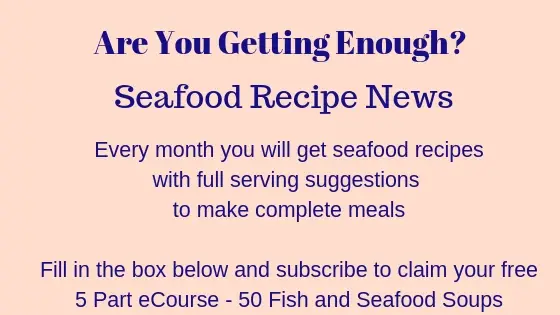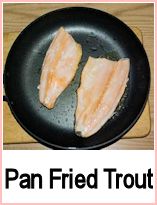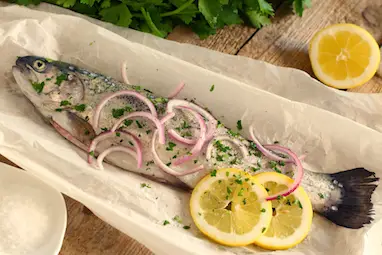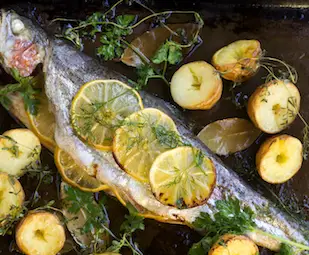- Home
- Freshwater
- Trout
Trout
As an Amazon Associate I earn from qualifying purchases.
Trout is a fresh water (river) fish.
It comes in brown, rainbow and salmon or sea varieties.
It's quite commonly farmed. If you buy it in a shop, it will probably be farmed rainbow.
It has a purple or violet band and black spots - it's quite beautiful to look at.
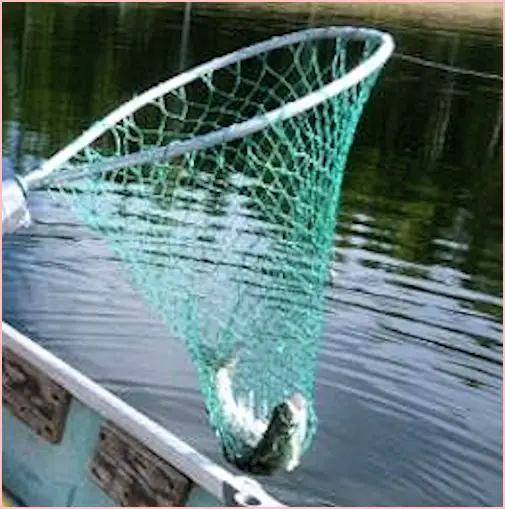
If you're lucky enough to find clear water, it's wonderful to watch as it darts around - it's quite athletic!
Brown trout is the river fish that you would most likely catch.
It is quite brown, with black or rusty spots and an orange stripe towards the bottom.
Rainbow and spotted are other common varieties.
Sea or salmon trout spends part of its life at sea, returning to the rivers to spawn.
The flavour depends on what it's been eating - freshwater shrimp, crayfish, small fish and the like will give a lovely orangey pink flesh and a delicate taste.
There are other variations, but they're only likely to be of interest to the fisherman as they are very similar in appearance and taste.
Farmed fish has a tendency to have flabby flesh - but it normally has a fairly reliable flavour.
The fish farms tend to concentrate on a particular period in the life cycle.
Hatcheries produce ova from brood stock and sell on to fingerling producers who grow fingerlings and fry from the eggs.
Fingerling producers supply Re-stockers and Table producers - this is where the fish are grown on.
Table producers in turn provide fish to Processors, while Re-stockers will supply Fisheries.
Some farms may undertake several of these business activities and in addition may have a shop, a smokery and processing unit.
Others allow anglers to fish in artificially stocked lakes and are often open to the public.
They are allowed to keep what they catch after paying a fee for fishing for the day.
There is no closed season for fish caught in enclosed stillwaters - in rivers, the local by-laws apply and these vary in different areas.
The reason for the closed season is to allow the fish to breed - so don't get cross about it as it's not petty regulations!
I had a most distressing experience at a trout farm in Dorset - I'm not going to repeat it here - I did complain to the Ministry... It happened in 1993 and still upsets me to think about it. Please, if you go to private fishing lakes, then consider the fish... It's natural for humans to eat flesh, but there are regulations.
Wild fish is far superior if you can find a good source.
The flesh is firm and meaty - the muscle has developed with swimming freely against currents, but the flavour can be variable, depending on where it's caught - some fish can taste a bit earthy.
This is why many people prefer farmed - the flesh is not so firm, but the flavor is more reliable.
Trout needs very little in the way of sauces as it has a delicate flavour of its own. Pan frying in butter is a simple way of cooking.
There are links for recipes on the Freshwater Fish page, but one of the easiest ways of cooking it is in newspaper.
Simply wet a sheet of newspaper and use it to wrap tightly round the whole, cleaned and gutted fish.Take the head off if you prefer.
You can put some herbs and a slice of lemon in the cavity before wrapping. Season with some black pepper and maybe a pat of butter.
Bake in a pre-heated oven (180 C, 350F Gas Mark 4) until the paper dries out - this will take around 15 to 20 minutes.
You can tell it's ready when the paper begins to scorch - you will smell that!!
When you remove the paper, it will take away the skin with it.
Serve with some buttered boiled potatoes and vegetables or just cook one trout per person and eat it with your fingers and some bread and butter.
Try these trout recipes
Some of the links on this site include affiliate links, providing Find-a-Seafood-Recipe a small percentage of the sale at no additional cost to you.
Subscribe to Seafood Recipe News - complete the form below.
Your email address is secure and will *only* be used to send Seafood Recipe News. When you confirm your subscription, you will be taken to a page where you can access your free eCourse. Complete the form and it will arrive over the following five days.
